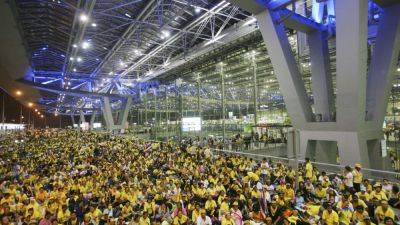Mercury rising: Why a Thai community believes it is being poisoned across the international border
NAN, Thailand: On clear mornings, at dawn, Ms Kanchanaporn Paeng-ud stands on a hillcrest where her family processes tapioca and looks out beyond the sweeping valleys across to neighbouring country Laos.
On the horizon, some 20 km away, she can see what resembles billowing columns of smoke that rise high into the sky. For five months of the year, those man-made clouds dissolve into tiny particles and are carried by the wind into her home country, Thailand.
The source of the emissions is the Hongsa Mine Mouth Power Project, a coal-fired power plant that began energy production in 2015 in Laos’ Xayaboury province.
Since then, villagers in the hills of Nan, a rural northeastern province on the Thai border with Laos, attest to strange things happening to their home and their health.
I n the rural district of Chalermprakiat, locals have observed their crops failing through the onset of disease and their soil becoming less fertile. They have been warned not to eat local fish and to be careful about the water they drink. Children, especially, have been beset by respiratory illnesses.
Deep suspicion has festered among villagers, and their fingers have squarely pointed to the polluting plant across the border.
Chalermprakiat is a remote corner of the country, where ethnic Lua people live intimately with the land, harvesting coffee, rice, corn, shrimp, crabs and fish.
Life is basic here but “our community is warm, loving and harmonious”, Ms Kanchanaporn said.
But with the emergence of the Hongsa plant, divisions have been stoked in the community and existence here has become more tenuous with many locals fearful they could suffer severe health problems in the years to come.
“The villagers are worried because if the






